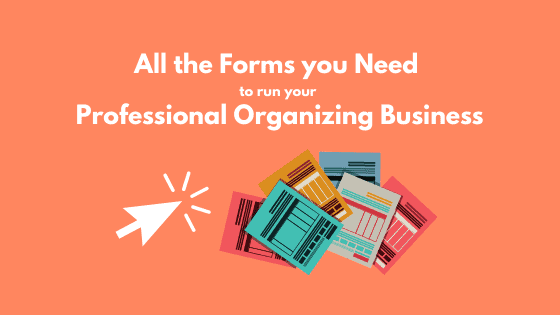What do you do if you are working as a Professional Organizer and your client will not get rid of anything and they’re looking to you for advice and guidance on how to organize a very cluttered home?

Today I’m sharing three (3) strategies I’ve developed working as a Professional Organizer since 2002 and the type of services I provide to my clients who may resist letting go of what others perceive as clutter.
Working as an organizer you are going to visit homes that contain a lot of stuff. And clients are going to turn to you for a solution. But often your clients can be reluctant to get rid of stuff even though we know our job would be much easier, and their lives easier, if they were managing fewer things.
Strategy #1 Accept that not everyone wants to be a minimalist
My first bit of advice to you is to simply take a deep breath and acknowledge not everyone is looking to become a minimalist and your client may not see the benefit or value in having fewer things in their homes.
I have a three-step process that I use on all my organizing projects which I call GDP. This stands for:
Step 1 – gather and sort like items
Step 2 – make decisions
Step 3 – put away items in an orderly fashion
I would absolutely never go into someone’s home and start by recommending that they get rid of things. And I recommend the same for you, that you first gather and sort like items and then question your clients if they want to keep things.

You do not want to come in aggressive or judgmental. You simply want to show them that they may own ten umbrellas or four can openers of which two of them are broken. Sometimes just bringing this awareness to the items people own may naturally allow them to reduce the number of possessions they have, which will make the put-away process much simpler.
Always guide your clients through the reduction process as a second step, not the first. Doing things in this order will save everyone a lot of time and frustration and help your client be more successful.
Strategy #2 Be honest with your client
The next thing I want you to do is simply be honest with your client. You can help them bring awareness to the fact that sometimes things simply will not fit or be easily accessible. It may be unsafe to keep large collections of things on the floor or on the top shelves of closets.
Let them know that it’s okay to keep things that they find useful or that they love, but I think it’s also your job as a professional to educate them about accessibility, safety, and storage.
Something I find myself saying on jobs sometimes is: “Well you can keep it, but you can’t keep it here.” This is relevant if your client wants to store photographs in a damp basement or hot attic or stacks of paper in the kitchen near the stove. As organizers, we can educate our clients on the proper storage of items and those safety issues by rearranging things in their homes. Even when they are reluctant to let go of things or have large collections that they want to keep.
We have a bigger job as Professional Organizers than just helping people eliminate things or store things in pretty boxes.
Strategy #3 Be a mirror for your client’s emotions
My third bit of advice for you is to simply be a mirror for your client’s feelings by bringing awareness to the negative emotional reasons they are keeping things.
Often the reason that people keep things is out of fear, guilt, shame, and attachment to the past. Now I know we are not therapists, but I think it’s perfectly acceptable to help your client bring awareness to these feelings if you feel comfortable having those conversations.
My clients will say that they feel guilty about getting rid of something that was given to them as a gift. Now I’m not going to force them to get rid of that item, but I will bring awareness to that feeling by having a little deeper conversation with them. I may ask – are there other items in your home that you feel guilty letting go of or if they have ever let go of an item that caused them to feel guilty and how they dealt with it.
I just want my clients to feel comfortable expressing those feelings of fear, shame, guilt, anxiety, or attachment. I let them know that having those feelings is part of the process of decluttering and creating a more organized and ideal life. There are just a little bit of growing pains as they’re making this transition. And you can be there as their organizer to hold their hand, be their cheerleader, and occasionally a shoulder to cry on.
I would love to hear about where you are in your business and how things are going with your clients. Please put your questions in the comment section of this blog.
When you are ready for training, check out all my course offerings at https://katherine-lawrence.teachable.com/
Happy Organizing!








![Organized Living: Solutions and Inspiration for Your Home [A Home Organization Book]](https://m.media-amazon.com/images/I/41YV91X2muL._SL160_.jpg)



